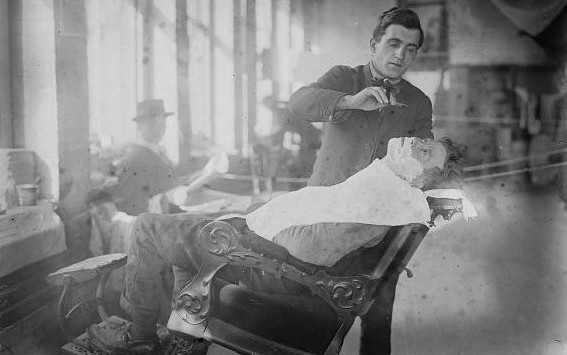THE ROMANCE OF A BOTTLE NOTE (1902)

******************************************************************************************************************************** Brownstone Detectives investigates the history of our clients’ homes. The story you are about to read was composed from research conducted in the course of one of those investigations. Do you know the history of YOUR house? ******************************************************************************************************************************** Floating along in the water, down the southern shore of Martha’s Vineyard, came bobbing a corked green beer bottle with what looked suspiciously like a note inside. Coaxing the bottle to shore with a stick, Harold A. Thomas barely got his shoes wet in retrieving the missive. It was certainly a distress call from the survivors of a sunken ship marooned on some unknown exotic island. Upon uncorking the bottle, Thomas fished the note out with some effort, unrolled the coarse paper, and began to read the nicely penned lines therein: “On board the good old ship Southwark the first day of September, in the year of our Lord nineteen hundred and two, we, the ‘Smart Set,’ have assembled in Cabin No. 5, to celebrate the last night of a most agreeable voyage.’ Not the note that Thomas had expected, his hopes of saving the daughter of an ambassador or the owner of a large and profitable railroad company, were suitably dashed against those great rocks that had so recently been the cause of the imagined marooning. Thomas, hoping to salvage something from his discovery, read on. “A reward of $5 will be given to any mortal or immortal who will bring this note to Howard S. Parker, 414 Madison street, […]
MACON STREET VS. CHARLIE CHAPLIN (1913)
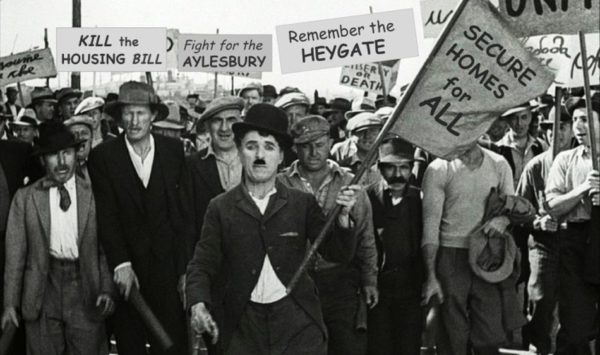
******************************************************************************************************************************** Brownstone Detectives investigates the history of our clients’ homes. The story you are about to read was composed from research conducted in the course of one of those investigations. Do you know the history of YOUR house? ******************************************************************************************************************************** In 1913, “Charlie Chaplin” was set to hit Bed-Stuy – in a big way. Let me explain. The residents of Stuyvesant Heights – 100 years ago – were concerned about any proposed construction developments that might encroach upon the way of life to which they’d grown accustomed. New people were moving into the neighborhood, new businesses opening up, and the residents felt they were losing control of what was going on around them. Specifically, they were justifiably troubled with the type of buildings the local developers might be planning to construct in their midst. In 1913, it was the movie houses. NOT IN MY BACKYARD! The construction of a “moving picture show” on Macon Street (near Lewis Avenue), was so unpopular, in fact, that its residents would take drastic measures against the proposal to build one “directly opposite the Public Library in Lewis Avenue.” The new theater was to go up on the northwest corner of Macon Street and Lewis Avenue, where a 3-story wooden structure (with a 2-story addition at back) had existed since the last century. Surrounded by their “fine residences,” the residents expected the lot to attract an establishment that would be more in keeping with the status of the neighborhood. When residents discovered, though, that the owners […]
A BEER CALLED MÜNCH (1904)
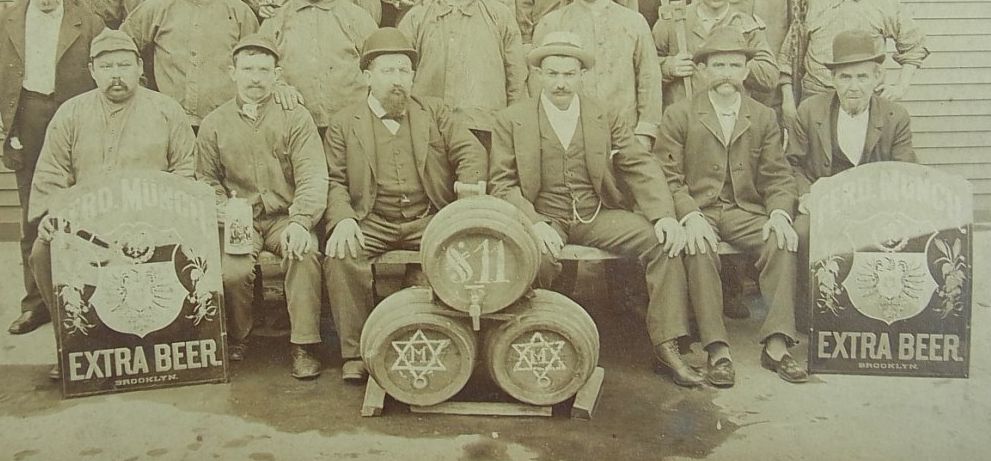
******************************************************************************************************************************** Brownstone Detectives investigates the history of our clients’ homes. The story you are about to read was composed from research conducted in the course of one of those investigations. Do you know the history of YOUR house? ******************************************************************************************************************************** One might wonder if a beer called “Münch” had at one time been on the receiving end of an unfortunate and slightly counter-intuitive moniker. Today, product names are usually selected based upon their abilities to stir some positive emotions – within the minds of the consumers – about their products. “Munch,” though, was not always an informal term describing a way of eating. More than 100 years ago, it was also a German name that was connected in the minds of many Brooklynites with a very satisfying “table beer.” THE MUNCH BREWERY The Ferdinand Münch Brewery, located at 277-299 Vernon Avenue from the late-1870s through to about 1920, when Prohibition spelled its end, satisfied the palates of Brooklyn, as a “family” beer, for more than 40 years. Housed originally within a building of old stone construction, Ferdinand Münch replaced the brewery building with a structure of brownstone and brick shortly after he purchased the property. Münch, though, would pass within the decade and leave his brewery to his sons, one of whom was William Münch. WILLIAM MUNCH AND HIS BROADWAY BUILDING In 1904, Sigmund Eisenbach, of 227 Gates Avenue, built a 4-story office building on the corner of Myrtle and Broadway, selling it to Ferdinand’s eldest son, William Münch, who had […]
MOOKIE, A CHILD BRIDE & A PET HORSE

******************************************************************************************************************************** Brownstone Detectives investigates the history of our clients’ homes. The story you are about to read was composed from research conducted in the course of one of those investigations. Do you know the history of YOUR house? ******************************************************************************************************************************** Not much exciting took place at 173 Stuyvesant Avenue throughout its 140+ year history – unless you count 1) Spike Lee’s movie, “Do The Right Thing,” 2) a pet horse, or 3) a child bride. MOOKIE’S CRIB The brownstone where director Spike Lee’s character “Mookie” lived in the 1989 movie, “Do The Right Thing,” 173 Stuyvesant Avenue sits at the corner of Quincy Street. Filmed at various additional locations in Bedford-Stuyvesant – but mostly on Stuyvesant Avenue – “Do The Right Thing” was a commercial success that featured the debuts of Martin Lawrence and Rosie Perez. A few years back, Spike Lee was in the news not only for his vilification of his old neighborhood’s “gentrifiers,” but also for his own request for a change in Bedford-Stuyvesant. Lee saw that change after he lobbied to have Stuyvesant Avenue – between Lexington Avenue And Quincy Street – renamed “Do The Right Thing Way.” YES, VIRGINIA, THERE WAS A HISTORY BEFORE SPIKE LEE Built at some point before 1877, it was listed for rent that year as a “partially furnished,” “two story basement brown stone house.” The owners included a rather interestingly worded phrase in this ad in the Brooklyn Daily Eagle, stating that they were willing to “let the whole or part […]
WONG SING BOW’S WHITE WIFE MINNIE (1877)
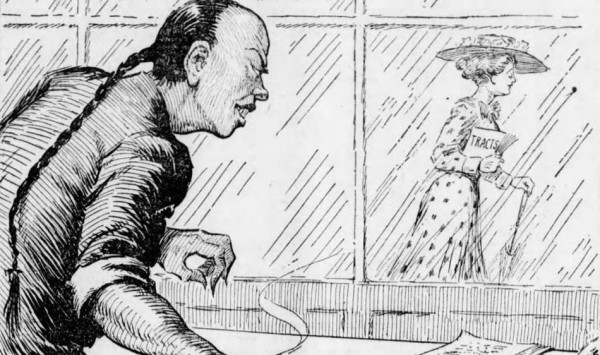
******************************************************************************************************************************** Brownstone Detectives investigates the history of our clients’ homes. The story you are about to read was composed from research conducted in the course of one of those investigations. Do you know the history of YOUR house? ******************************************************************************************************************************** In 1886, the life that Wong Sing Bow had been building up for years began to crumble before his eyes. A naturalized U.S. citizen, Wong Sing had been born “a subject of the emperor of China.” But he had been in America “long enough to save considerable money and to appreciate the beauty of Irish girls,” said one paper of the time. Wong Sing spoke English fluently and was often called upon by the authorities to interpret. With all that Wong Sing had going for him, it had originally seemed likely that he was going to have a good life. But this was the 1800s. And Wong Sing was Chinese. ANTI-CHINESE PREJUDICE IN 19TH CENTURY BROOKLYN After Wong Sing’s arrival in the U.S. around 1870, according to one paper, “the celestial youth immediately fitted himself in the groove of circumstances. “He decided to become intensely American. He shaved his cue off, doffed his Chinese garb, proclaimed his intention to become a citizen, and went to Sunday school ‘all samme like Melican man.’” Apparently, the papers, like most Americans, had no politically correct bent in those days. But the Chinese were located squarely at the bottom of the social construct – just slightly beneath the Irish and the Germans – and so […]
THE HERO OF THE HALSEY STREET FIRE (1911)
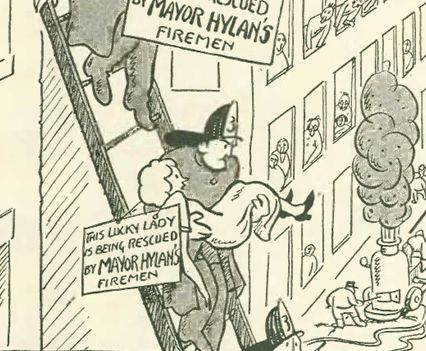
******************************************************************************************************************************** Brownstone Detectives investigates the history of our clients’ homes. The story you are about to read was composed from research conducted in the course of one of those investigations. Do you know the history of YOUR house? ******************************************************************************************************************************** Late in 1911, on a brisk early November morning, a fire broke out in the ground floor store of a 4-story corner apartment building across the street from Saratoga Square Park. It quickly spread, engulfing the entire building. Smoke pouring out of the store on the ground floor of 801 Halsey Street was first seen by a streetcar motorman, William Coffey, who, thinking quickly, began to clang his streetcar gong to arouse the sleeping inhabitants of the building. Coffey and his conductor, along with their six passengers, descended from the car and rushed to the building to do what they could do to assist in evacuating the residents. The fire had apparently started on the ground floor on the Halsey side of the building in a stationery store run by Wolf Bialik. Next door was a grocery store operated by Ernest Seemeyer. The flames then quickly “shot up the dumb waiter shaft to the roof, mushrooming out on each floor.” DETECTIVE O’HARA TO THE RESCUE Across the street, at No. 98 Howard Avenue, a 37-year-old police detective, Irving A. O’Hara, upon hearing the street car gong, had begun dressing quickly and rushed across the street to assist. By this point, the three families living in the building had made it out […]
WHERE WAS THIS PICTURE TAKEN? PT. II (1924)
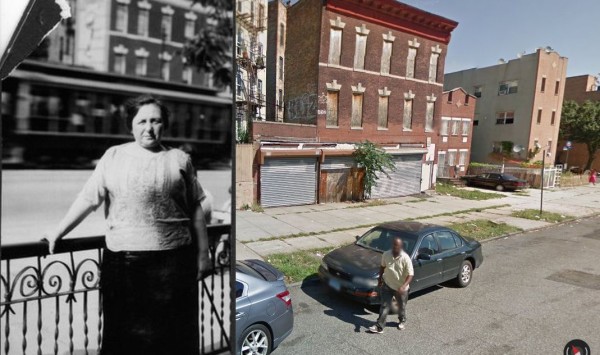
Junior Brownstone Detectives! In last week’s episode, “Where Was This Picture Taken, Pt. I,” we challenged you to a task of monumental proportions: “Study an historic photograph and determine where in Brooklyn it was taken.” As you’ll recall, while the photograph had some distinguishing elements in it, the location of the subject was not immediately discernible. Each of the elements therein could have been found within any of the sections of the borough. We decided, though, that studying the elements of the picture itself, along with just a bit of information about the individual within the picture, we might determine, with great specificity, exactly where the photograph was taken. Today, we are going to review some sources that the Brownstone Detectives use on a daily basis to solve everyday dilemmas such as this one. AN HISTORICAL DETECTIVE’S TOOLKIT Where do we begin when attempting to determine the Brooklyn location of an old photograph? There are a number of resources that can be of use in any mystery such as this. For the particular one we’ve presented you with, though, we will list the resources that we often use and show you how to use them in attempting to find a solution: Ancestry.com – If you have a name connected with the subject in the photo, as we did, this is always a good place to begin your search. At Ancestry.com, using the search function, place any names that you have into the engine, and then see what pops up. With […]
A BED-STUY BUILDER “GOES ASTRAY” (1891)
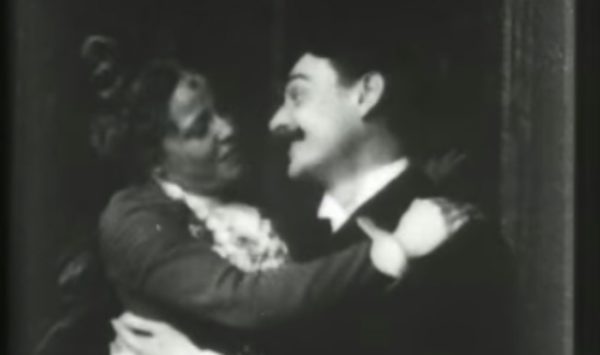
******************************************************************************************************************************** Brownstone Detectives investigates the history of our clients’ homes. The story you are about to read was composed from research conducted in the course of one of those investigations. Do you know the history of YOUR house? ******************************************************************************************************************************** One of the more colorful builders in the Bedford-Stuyvesant area before the turn of the century was Ransom F. Clayton. Clayton and his wife Hannah purchased entire blocks for development and became rich reselling land and building brownstones for occupancy. Clayton, approximately 60 years of age in the early 1890s, was the founder of the building firm Ransom F. Clayton & Son. In addition to being a builder, he had also been a jack-of-all-trades – a Civil War veteran, an inventor, a nominee for City Controller with the Prohibition Party, and a director and the treasurer of the Ocean Palace Elevated Railroad. In 1891, though, he could add to that list the title of “scoundrel.” For, in that year, having some years previous turned over the reins of his building firm to his son, Clayton was now being given the opportunity to lose the property in a highly publicized divorce scandal. Several newspapers of the time hyperventilated over the steamy details of the case, from the “plain black gown” that Mrs. Clayton wore to court, to the description of “the other woman,” Mrs. Margaret F. Oakley, who was “tall,” “finely formed,” and “richly attired,” and further to, finally, how the crowd in the packed court room erupted in applause when the […]
